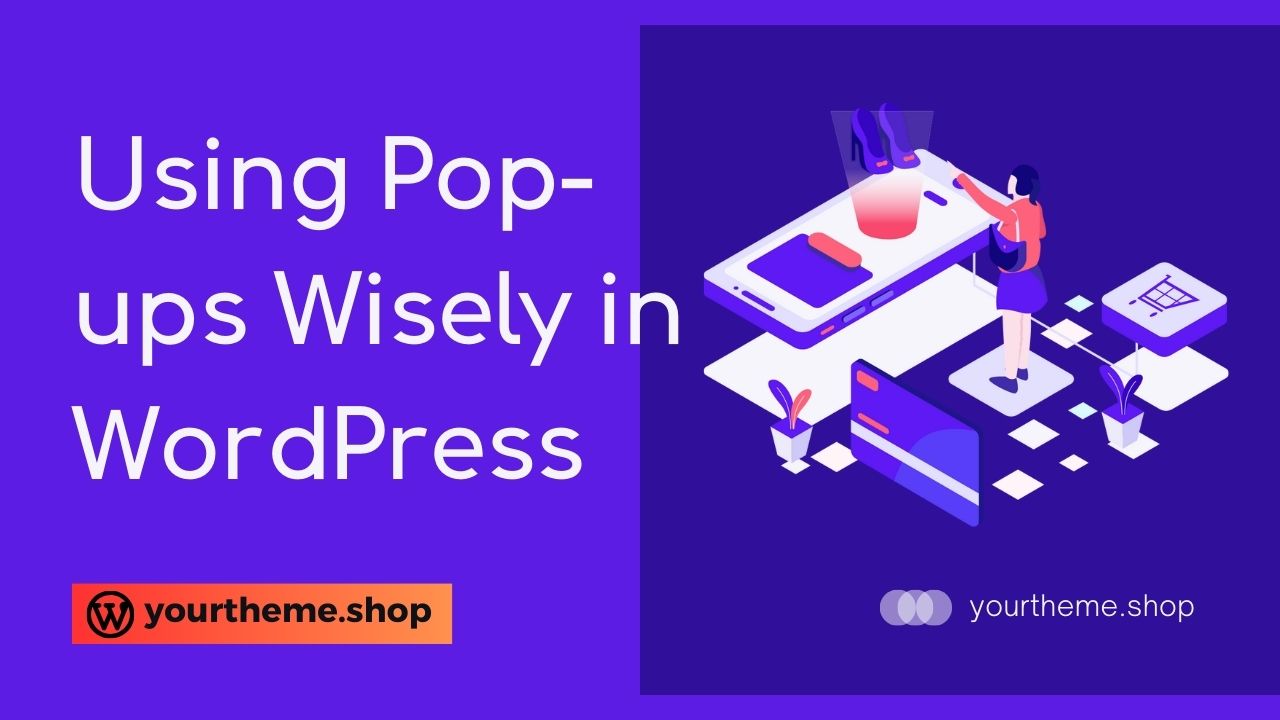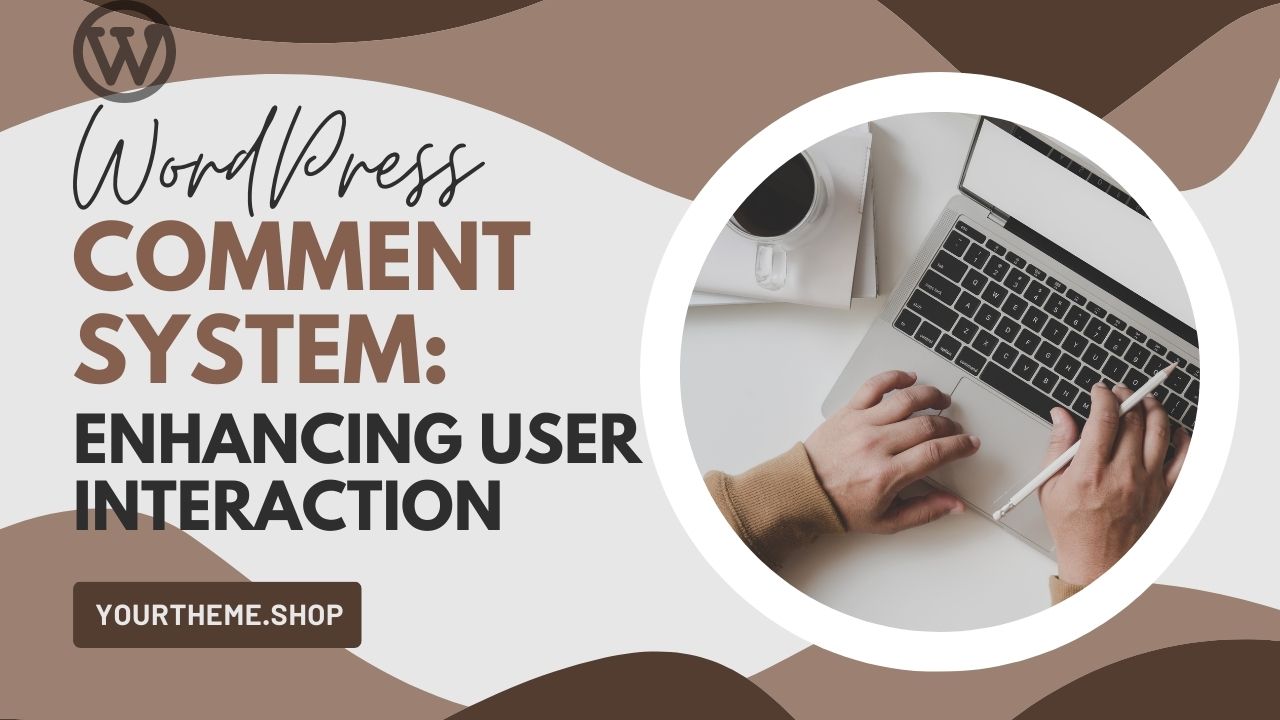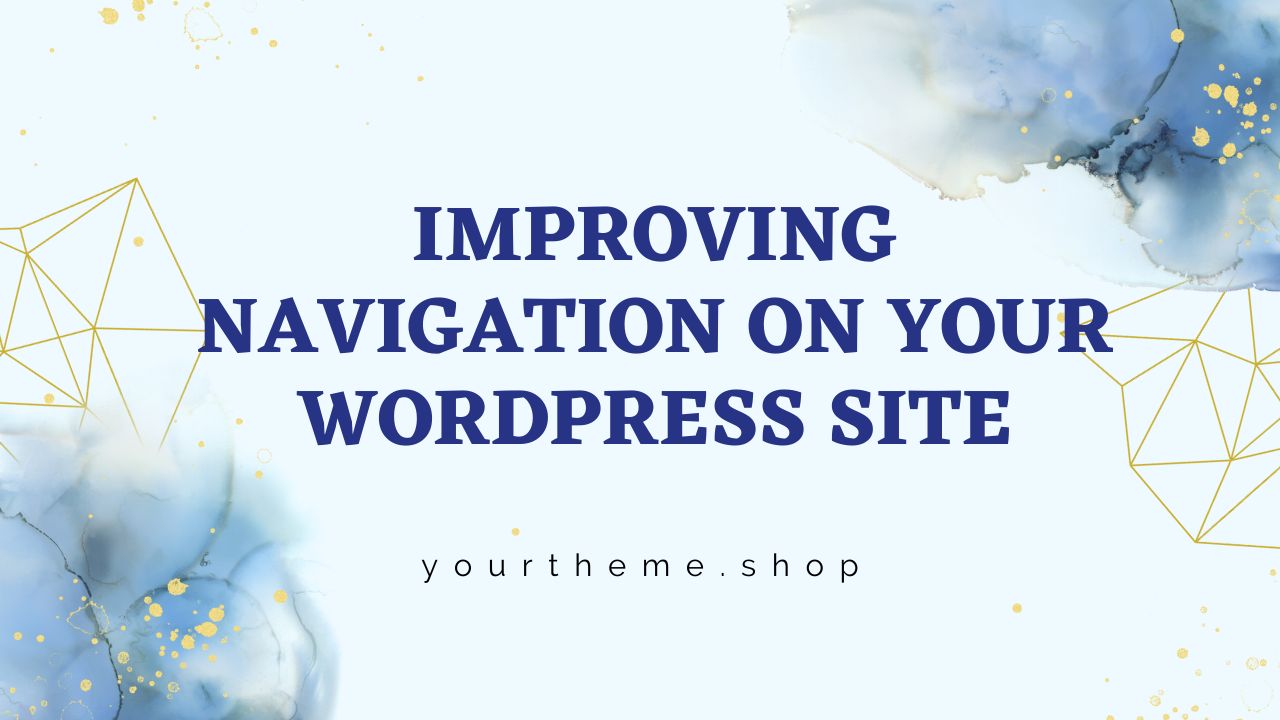Using Pop-ups Wisely in WordPress
In the ever-evolving digital landscape, pop-ups have become a staple in enhancing user engagement on websites. At YourTheme.shop, I’ve honed the art of using pop-ups wisely in WordPress, ensuring they serve as effective tools for user interaction without being intrusive. This comprehensive guide will explore the intricacies of creating user-friendly pop-ups for WordPress websites, optimizing conversion rates, and designing non-intrusive pop-ups that complement the user experience.
Using Pop-ups Wisely in WordPress
Strategic Implementation of Pop-ups
The essence of using pop-ups wisely in WordPress hinges on striking a perfect balance between enhancing user engagement and avoiding user annoyance. This delicate equilibrium is vital for ensuring that pop-ups serve as beneficial additions to your site rather than deterrents.
Crafting Value-Adding Pop-ups
Enhancing User Experience with Thoughtful Design
Effective integration of pop-ups into your WordPress site involves crafting them in a way that they add unmistakable value to the user experience. This means designing pop-ups that are not only visually appealing but also relevant and helpful to your site visitors.
Creating User-Friendly Pop-ups for WordPress Websites
Designing with the User in Mind
Focusing on User Needs and Preferences
Creating user-friendly pop-ups for WordPress websites requires a deep understanding of your audience’s needs and preferences. This involves using language, visuals, and offers that resonate with your target audience, ensuring that each pop-up feels like a natural and helpful part of their browsing experience.
Ensuring Easy Navigation and Closure
Respecting User Autonomy and Comfort
A key aspect of creating user-friendly pop-ups is ensuring that they are easy to navigate and close. Users should feel in control of their experience, able to easily dismiss pop-ups without frustration or confusion.
Optimizing Conversion Rates with WordPress Pop-ups
Conversion-Centric Pop-up Strategies
Maximizing Impact with Targeted Offers
To optimize conversion rates with WordPress pop-ups, it’s essential to employ strategies that focus on conversions. This means presenting targeted offers, sign-up forms, or calls-to-action that align with the interests and behaviors of your site visitors.
Measuring and Refining for Better Results
Utilizing Analytics for Continuous Improvement
Continuously measuring the performance of your pop-ups and refining them based on data is crucial for optimizing conversion rates. This involves analyzing click-through rates, conversion rates, and other relevant metrics to understand what works and what needs improvement.
How to Design Non-Intrusive Pop-ups in WordPress
Achieving a Non-Disruptive User Experience
Crafting Pop-ups That Blend Seamlessly
Designing non-intrusive pop-ups in WordPress is about creating pop-ups that blend seamlessly into the user experience. They should appear at the right time and place, enhancing the user’s journey rather than interrupting it.
Utilizing Smart Triggers and Timing
Engaging Users at the Right Moment
The key to designing non-intrusive pop-ups is to utilize smart triggers and timing. This means displaying pop-ups based on specific user actions or behaviors, such as spending a certain amount of time on a page or showing intent to leave the site.
Analyzing User Behavior for Pop-up Timing
Timing is everything when it comes to pop-ups. Analyzing user behavior to determine the most opportune moments for pop-up display can significantly enhance their effectiveness, contributing to higher engagement and conversion rates.
Creating User-Friendly Pop-ups for WordPress Websites
Designing for Maximum Engagement
Creating user-friendly pop-ups for WordPress websites involves more than just aesthetics. It’s about designing for engagement. This includes using compelling calls-to-action, attractive visuals, and ensuring that the pop-up content is relevant and valuable to the user.
Ensuring Ease of Closure and Accessibility
User-friendly pop-ups should be easy to close and accessible to all users, including those with disabilities. This section will cover the best practices in making your pop-ups not only engaging but also inclusive and non-disruptive to the user experience.
Optimizing Conversion Rates with WordPress Pop-ups
Conversion-Focused Pop-up Strategies
Optimizing conversion rates with WordPress pop-ups requires a focused strategy. This involves crafting pop-ups with clear, concise messages and strong calls-to-action that guide users towards desired outcomes, such as newsletter sign-ups, product purchases, or other key conversions.
A/B Testing for Pop-up Effectiveness
A/B testing is a critical tool in optimizing pop-ups for conversions. By testing different versions of a pop-up, you can gather data on what works best for your audience, leading to more informed decisions and higher conversion rates.
How to Design Non-Intrusive Pop-ups in WordPress
Balancing Visibility with User Experience
Designing non-intrusive pop-ups in WordPress is a delicate balance. This section will explore how to make your pop-ups noticeable without being disruptive, ensuring they complement rather than detract from the user experience.
Utilizing Trigger Points and User Intent
In the realm of using pop-ups wisely in WordPress, understanding and aligning with user intent is paramount. This section delves into the nuances of identifying and utilizing trigger points that resonate with user behavior, such as time spent on a page or specific actions indicating exit intent. By doing so, pop-ups can be deployed at moments that are most conducive to user engagement and least likely to disrupt the user experience.
Strategic Deployment Based on User Actions
Crafting Timely Pop-up Experiences
Creating user-friendly pop-ups for WordPress websites involves more than just appealing design; it requires strategic timing. This subsection focuses on deploying pop-ups based on user actions, such as scrolling depth or interaction with specific content. By understanding these user actions, pop-ups can be timed to appear when users are most receptive, enhancing the likelihood of positive engagement and interaction.
How to Design Non-Intrusive Pop-ups in WordPress
Balancing User Experience with Marketing Goals
Designing Pop-ups That Respect the User Journey
When considering how to design non-intrusive pop-ups in WordPress, it’s crucial to balance marketing goals with user experience. This involves creating pop-ups that are not only visually appealing but also considerate of the user’s journey on the site. Pop-ups should feel like a natural, seamless part of the user’s interaction with your website, rather than an interruption.
Utilizing Exit-Intent Technology
Capturing Attention at the Right Moment
Optimizing conversion rates with WordPress pop-ups often involves leveraging exit-intent technology. This technology detects when a user is about to leave the site and triggers a pop-up at that critical moment. This subsection explores how to effectively use exit-intent pop-ups to capture user attention and provide value, such as special offers or reminders, without being intrusive.
Optimizing Conversion Rates with WordPress Pop-ups
Enhancing User Engagement with Targeted Messages
Tailoring Pop-up Content to User Preferences
To optimize conversion rates with WordPress pop-ups, it’s essential to tailor pop-up content to align with user preferences and interests. This involves analyzing user behavior on your site to understand what content or offers might be most appealing to different segments of your audience.
Integrating Analytics for Smarter Pop-up Deployment
Leveraging Data for Effective Pop-up Strategies
Integrating analytics plays a crucial role in using pop-ups wisely in WordPress. By analyzing data on how users interact with your pop-ups, you can make informed decisions about which types of pop-ups work best, what content resonates with your audience, and how to adjust your strategies for maximum effectiveness.
Creating User-Friendly Pop-ups for WordPress Websites
Ensuring Smooth User Interactions with Pop-ups
Focusing on User-Friendly Design and Functionality
Creating user-friendly pop-ups for WordPress websites requires a focus on smooth user interactions. This means designing pop-ups that are easy to engage with and dismiss, providing clear and concise messages, and ensuring that they are fully responsive and accessible across all devices and screen sizes.
Personalizing Pop-ups for Enhanced Relevance
Delivering Customized Experiences to Users
Personalization is key in creating non-intrusive pop-ups. By personalizing pop-up content based on user behavior, past interactions, or demographic data, you can ensure that each pop-up feels relevant and valuable to the user, thereby enhancing the overall user experience and increasing the likelihood of conversion.
Best Practices for Pop-up Timing and Frequency
Determining Optimal Timing for Pop-up Display
The timing and frequency of pop-ups can significantly impact their effectiveness. This section will provide insights into determining the optimal timing for displaying pop-ups, based on user engagement patterns and website goals.
Avoiding Overuse and User Annoyance
One of the biggest pitfalls in using pop-ups is overuse, which can lead to user annoyance and increased bounce rates. Here, we’ll discuss how to avoid this by setting appropriate frequency limits and ensuring your pop-ups provide real value to the user.
Customizing Pop-ups to Match Your WordPress Theme
Seamless Integration with Site Design
Customizing pop-ups to match your WordPress theme is crucial for a cohesive user experience. This involves tailoring the design, color scheme, and typography of your pop-ups to align with the overall aesthetic of your site.
Responsive and Mobile-Friendly Pop-ups
With the increasing use of mobile devices, ensuring your pop-ups are responsive and mobile-friendly is essential. This section will cover the best practices for designing pop-ups that look great and function seamlessly across all devices.
Analyzing and Improving Pop-up Performance
Using Analytics to Measure Pop-up Impact
Analyzing pop-up performance is key to understanding their impact on your site. This involves using analytics tools to track metrics like click-through rates, conversion rates, and bounce rates, providing valuable insights into how your pop-ups are performing.
Iterative Improvements Based on Data
Based on the data gathered, making iterative improvements to your pop-ups is crucial for ongoing optimization. This section will discuss how to use analytics data to refine your pop-up strategy, ensuring they continue to drive engagement and conversions effectively.




